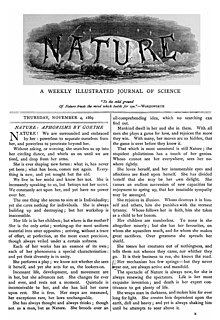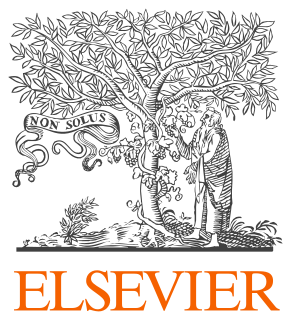The electromagnetic spectrum is the range of frequencies of electromagnetic radiation and their respective wavelengths and photon energies.
Optoelectronics is the study and application of electronic devices and systems that source, detect and control light, usually considered a sub-field of photonics. In this context, light often includes invisible forms of radiation such as gamma rays, X-rays, ultraviolet and infrared, in addition to visible light. Optoelectronic devices are electrical-to-optical or optical-to-electrical transducers, or instruments that use such devices in their operation.
Electro-optics is often erroneously used as a synonym, but is a wider branch of physics that concerns all interactions between light and electric fields, whether or not they form part of an electronic device.

Forward-looking infrared (FLIR) cameras, typically used on military and civilian aircraft, use a thermographic camera that senses infrared radiation.

A thermographic camera is a device that forms a heat zone image using infrared radiation, similar to a common camera that forms an image using visible light. Instead of the 400–700 nanometre range of the visible light camera, infrared cameras operate in wavelengths as long as 14,000 nm (14 µm). Their use is called thermography.

Charles Hard Townes was an American physicist and inventor of the maser. Townes worked on the theory and application of the maser, for which he obtained the fundamental patent, and other work in quantum electronics associated with both maser and laser devices. He shared the 1964 Nobel Prize in Physics with Nikolay Basov and Alexander Prokhorov. Townes was an adviser to the United States Government, meeting every US President from Harry Truman (1945) to Bill Clinton (1999).
Molecular physics is the study of the physical properties of molecules, the chemical bonds between atoms as well as the molecular dynamics. Its most important experimental techniques are the various types of spectroscopy; scattering is also used. The field is closely related to atomic physics and overlaps greatly with theoretical chemistry, physical chemistry and chemical physics.

Photodetectors, also called photosensors, are sensors of light or other electromagnetic radiation. A photo detector has a p–n junction that converts light photons into current. The absorbed photons make electron–hole pairs in the depletion region. Photodiodes and photo transistors are a few examples of photo detectors. Solar cells convert some of the light energy absorbed into electrical energy.
Robert Benjamin Leighton was a prominent American experimental physicist who spent his professional career at the California Institute of Technology (Caltech). His work over the years spanned solid state physics, cosmic ray physics, the beginnings of modern particle physics, solar physics, the planets, infrared astronomy, and millimeter- and submillimeter-wave astronomy. In the latter four fields, his pioneering work opened up entirely new areas of research that subsequently developed into vigorous scientific communities.
Eric E. Becklin is an American astrophysicist. The primary focus of Becklin's research is infrared imaging and spectroscopy, including the search for brown dwarfs, the detection of circumstellar dust rings, the dynamics and composition of the center of the Milky Way galaxy, and the nature of luminous infrared galaxies.
Thiocyanic acid is a chemical compound with the formula HSCN which exists as a tautomer with isothiocyanic acid (HNCS). The iso- form tends to dominate with the material being about 95% isothiocyanic acid in the vapor phase.
Lead selenide (PbSe), or lead(II) selenide, a selenide of lead, is a semiconductor material. It forms cubic crystals of the NaCl structure; it has a direct bandgap of 0.27 eV at room temperature. It is a grey crystalline solid material.

The Physical Research Laboratory (PRL) is a National Research Institute for space and allied sciences, supported mainly by Department of Space, Government of India. This research laboratory has ongoing research programmes in astronomy and astrophysics, atmospheric sciences and aeronomy, Earth sciences, Solar System studies and theoretical physics. It manages the Udaipur Solar Observatory and is located in Ahmedabad.
The Advanced Concepts Laboratory (ACL), formerly the Signature Technology Laboratory, is one of eight labs in the Georgia Tech Research Institute and one of three labs under the Sensors and Intelligent Systems directorate. ACL conducts research and development in four technical areas: electromagnetic materials and structures, electromagnetic apertures and scattering, optical and infrared physics and phenomenology, and secure information systems.
Steven C. Frautschi is an American theoretical physicist, currently professor of physics emeritus at the California Institute of Technology (Caltech). He is known principally for his contributions to the bootstrap theory of the strong interactions and for his contribution to the resolution of the infrared divergence problem in quantum electrodynamics (QED). He was named a Fellow of the American Physical Society in 2015 for "contributions to the introduction of Regge poles into particle physics, elucidation of the role of infrared photons in high energy scattering, and for seminal contributions to undergraduate physics education".
Yuen-Ron Shen is a professor emeritus of physics at the University of California, Berkeley, known for his work on non-linear optics. He was born in Shanghai and graduated from National Taiwan University. He received his Ph.D. in Applied Physics from Harvard under physicist and Nobel Laureate Nicolaas Bloembergen in 1963, and joined the department of physics at Berkeley in 1964. In the early years, Dr. Shen was probably best known for his work on self-focusing and filament propagation of laser beams in materials. These fundamental studies enabled the creation of ultrafast supercontinuum light sources. In the 1970s and 1980s, he collaborated with Yuan T. Lee on the study of multiphoton dissociation of molecular clusters. The molecular-beam photofragmentation translational spectroscopy that they developed has clarified much of the initial confusion concerning the dynamics of infrared multiphoton dissociation processes. In the 1980s and 1990s, Professor Shen developed various nonlinear optics methods for the study of material surfaces and interfaces. Among these techniques, second-harmonic generation and sum frequency generation spectroscopy are best known and now widely used by scientists from various fields. He has collaborated with Gabor Somorjai on the use of the technique of Sum Frequency Generation Spectroscopy to study catalyst surfaces. He is the author of the book The Principles of Nonlinear Optics. Professor Shen belongs to the prolific J. J. Thomson academic lineage tree. Currently, Professor Shen works in U. C. Berkeley and Fudan University in Shanghai.
Ian Gatley was the former Provost and Senior Vice President for Academic Affairs of New Jersey Institute of Technology (NJIT) in Newark, New Jersey.
He is also a Distinguished Professor of Physics in the department of Physics at the College of Science and Liberal Arts in NJIT.
He is a prolific scholar well known in Astronomy and Imaging Science.
The reststrahlen effect is a reflectance phenomenon in which electromagnetic radiation within a narrow energy band cannot propagate within a given medium due to a change in refractive index concurrent with the specific absorbance band of the medium in question; this narrow energy band is termed the reststrahlen band.

The superconducting nanowire single-photon detector (SNSPD) is a type of near-infrared and optical single-photon detector based on a current-biased superconducting nanowire. It was first developed by scientists at Moscow State Pedagogical University and at the University of Rochester in 2001.
The index of physics articles is split into multiple pages due to its size.










